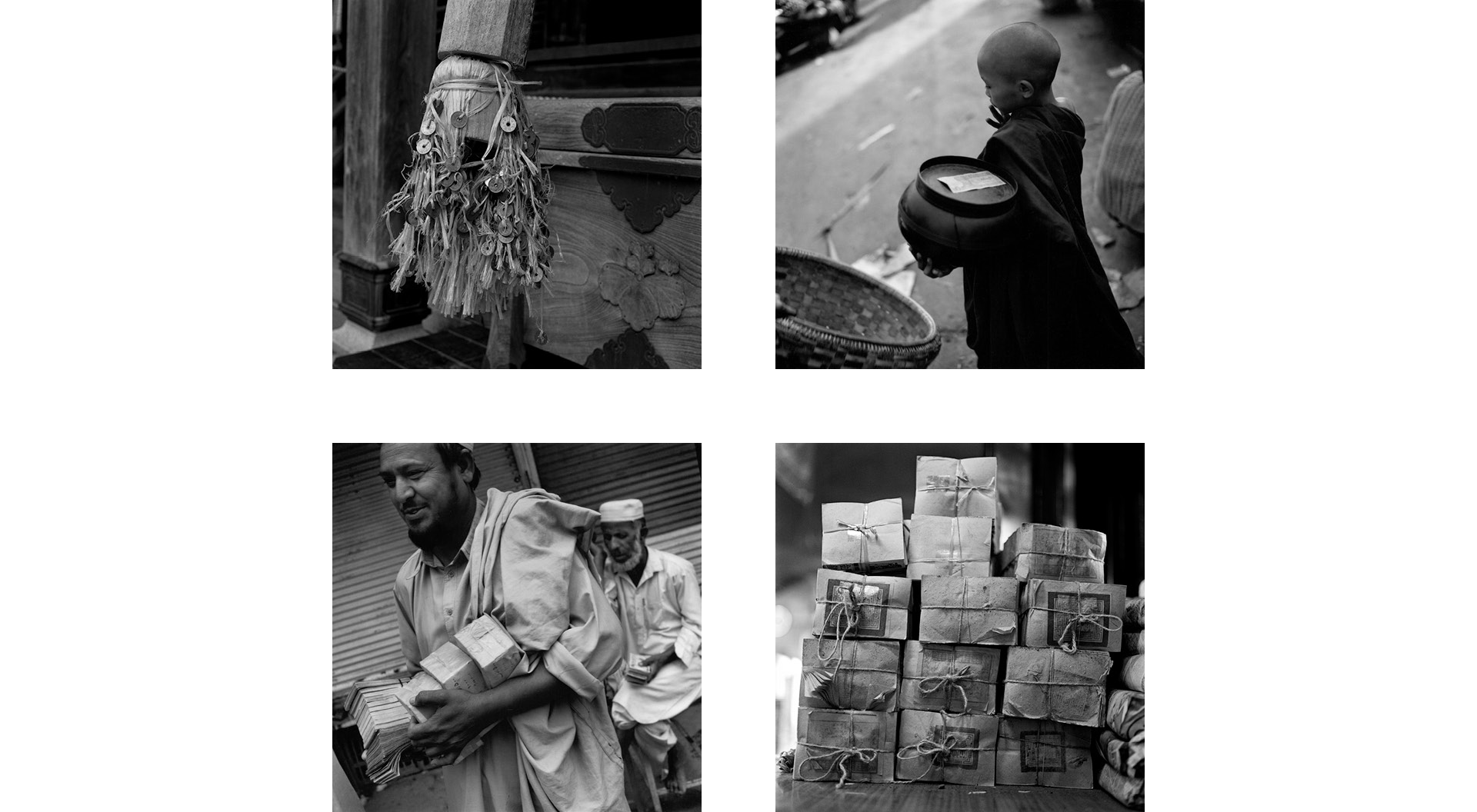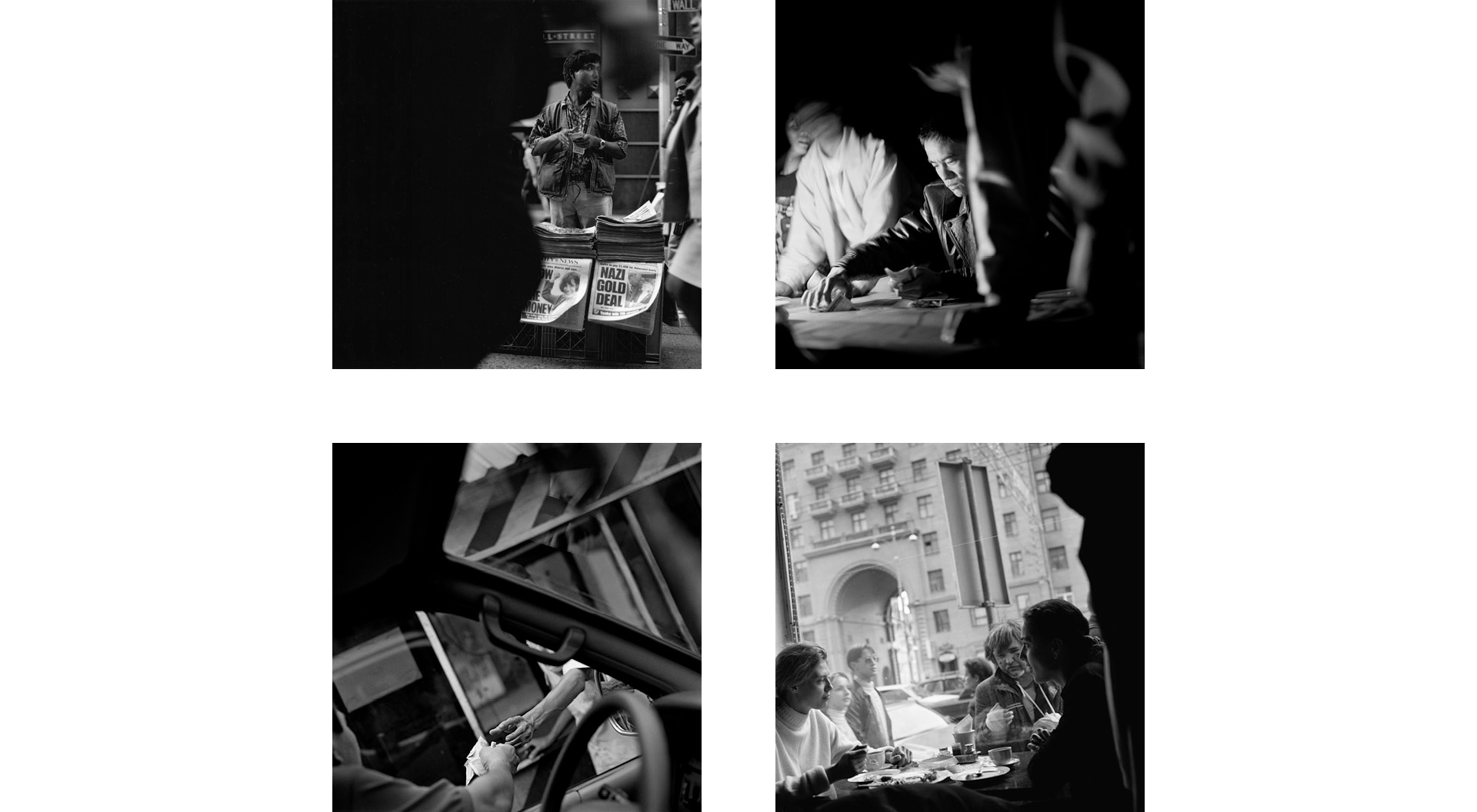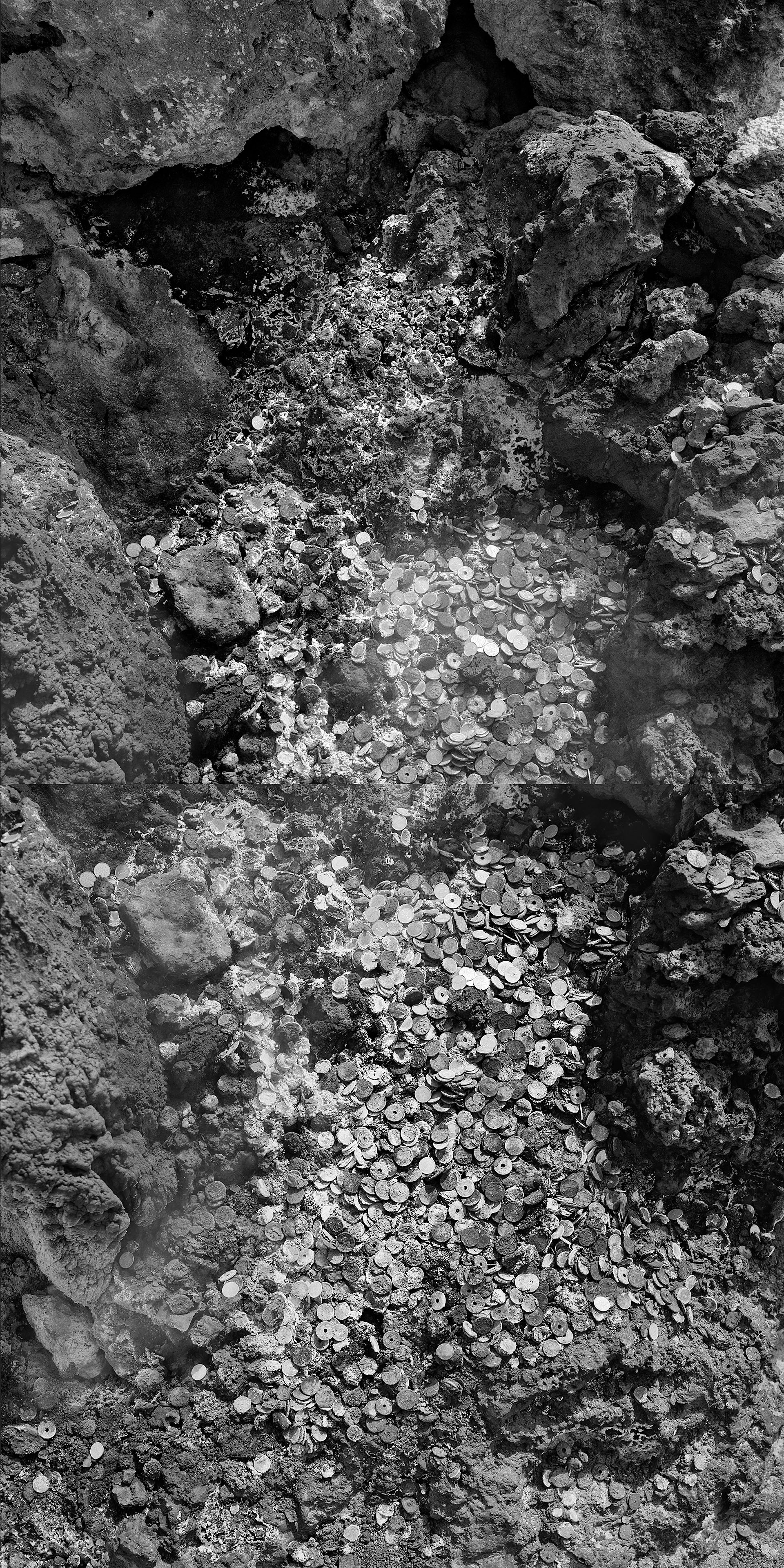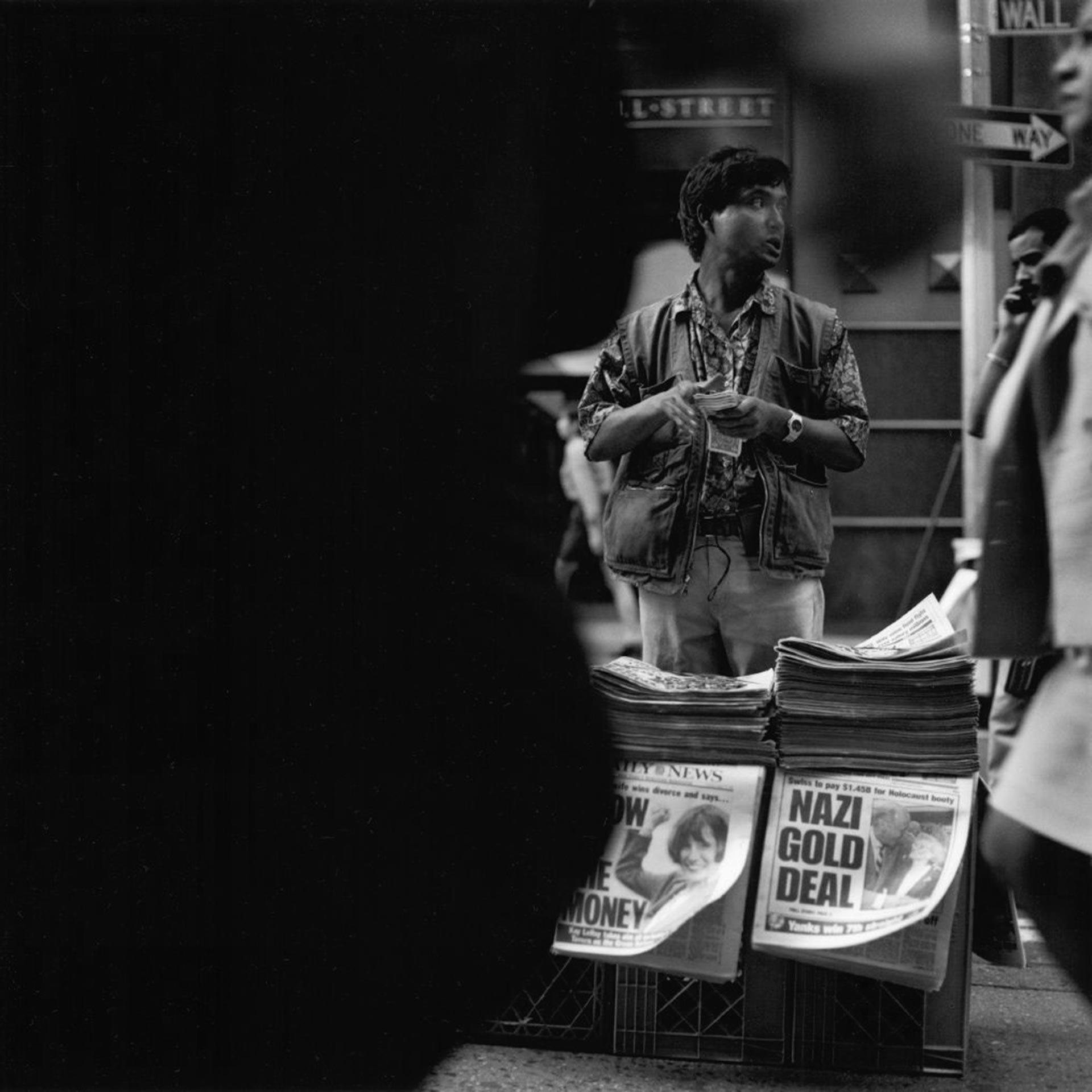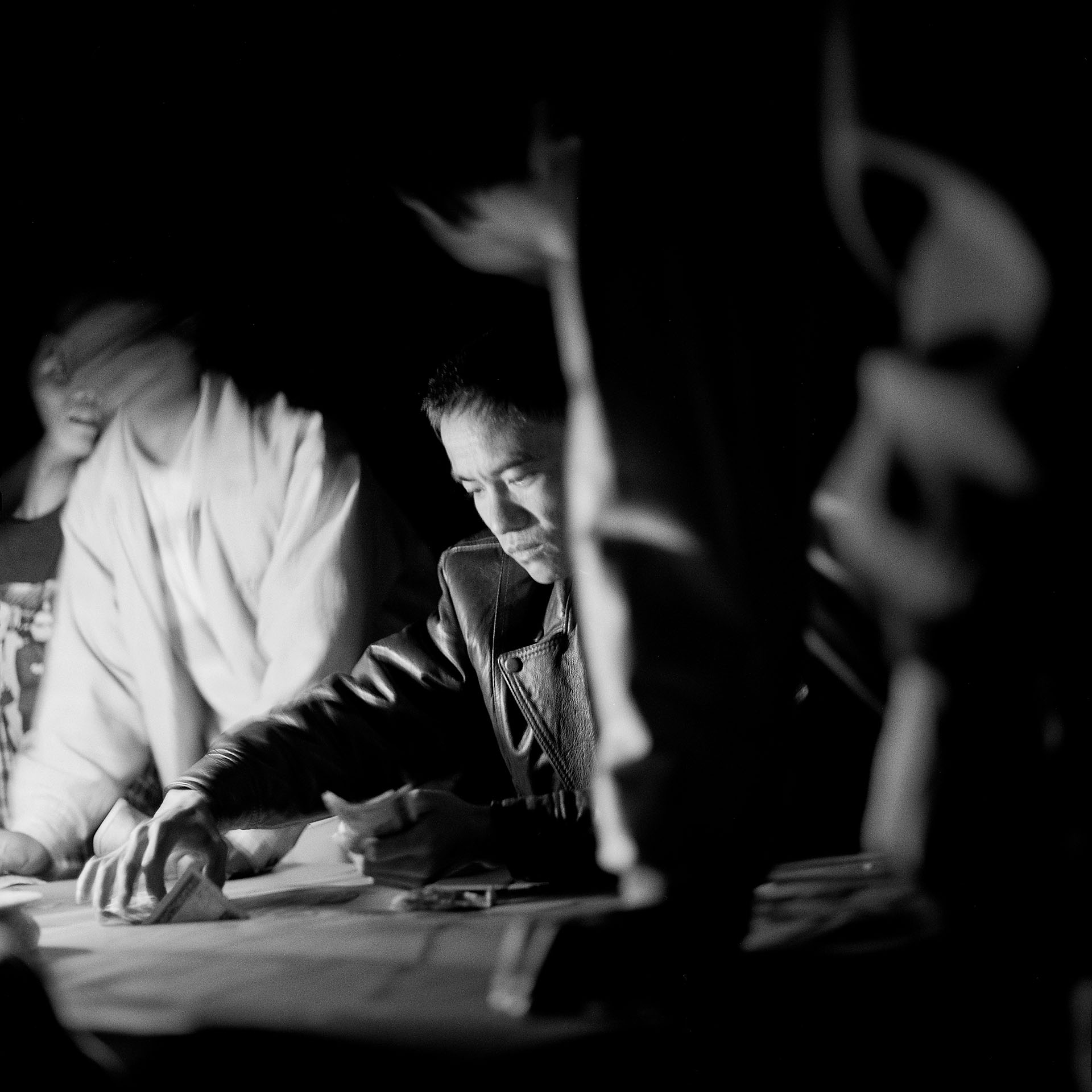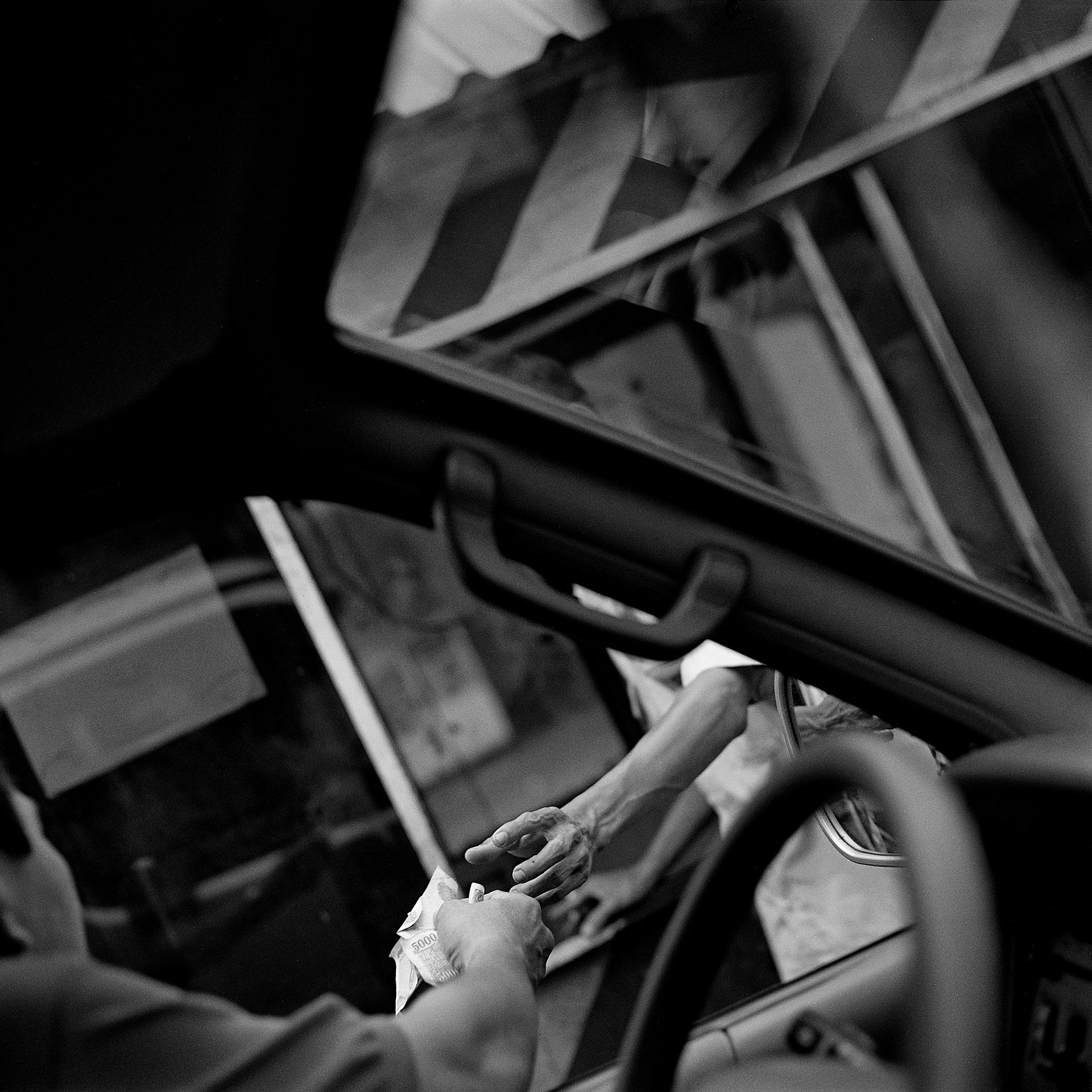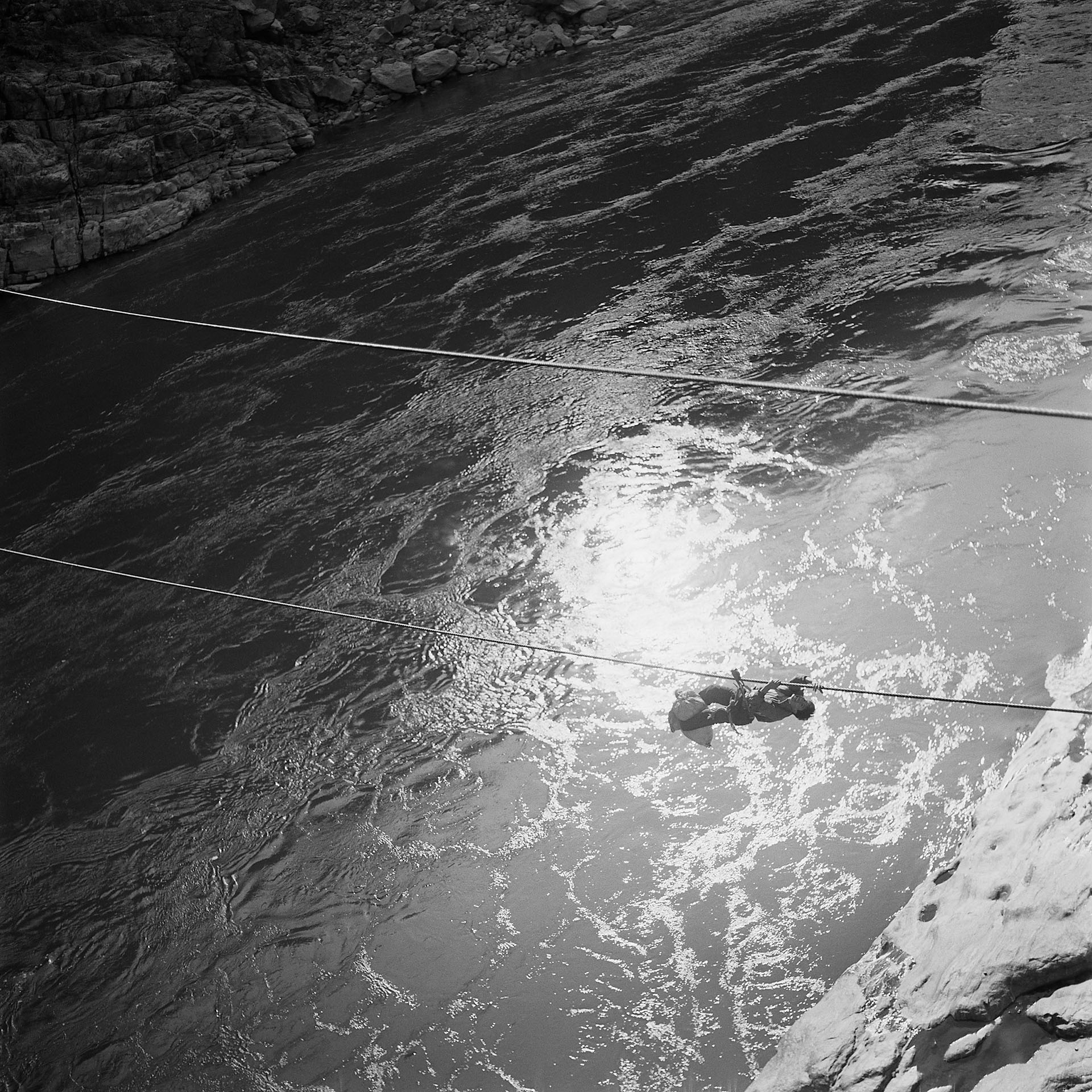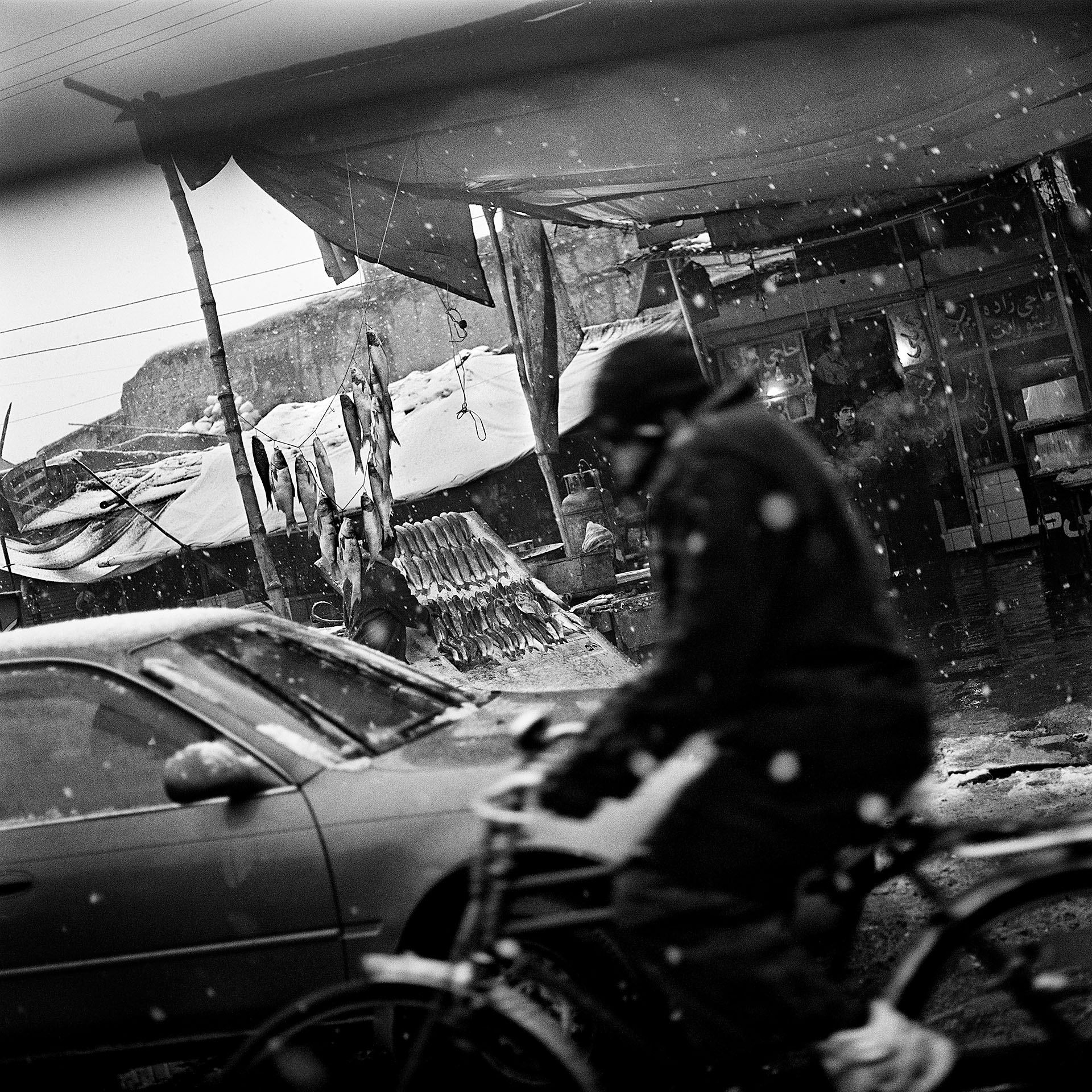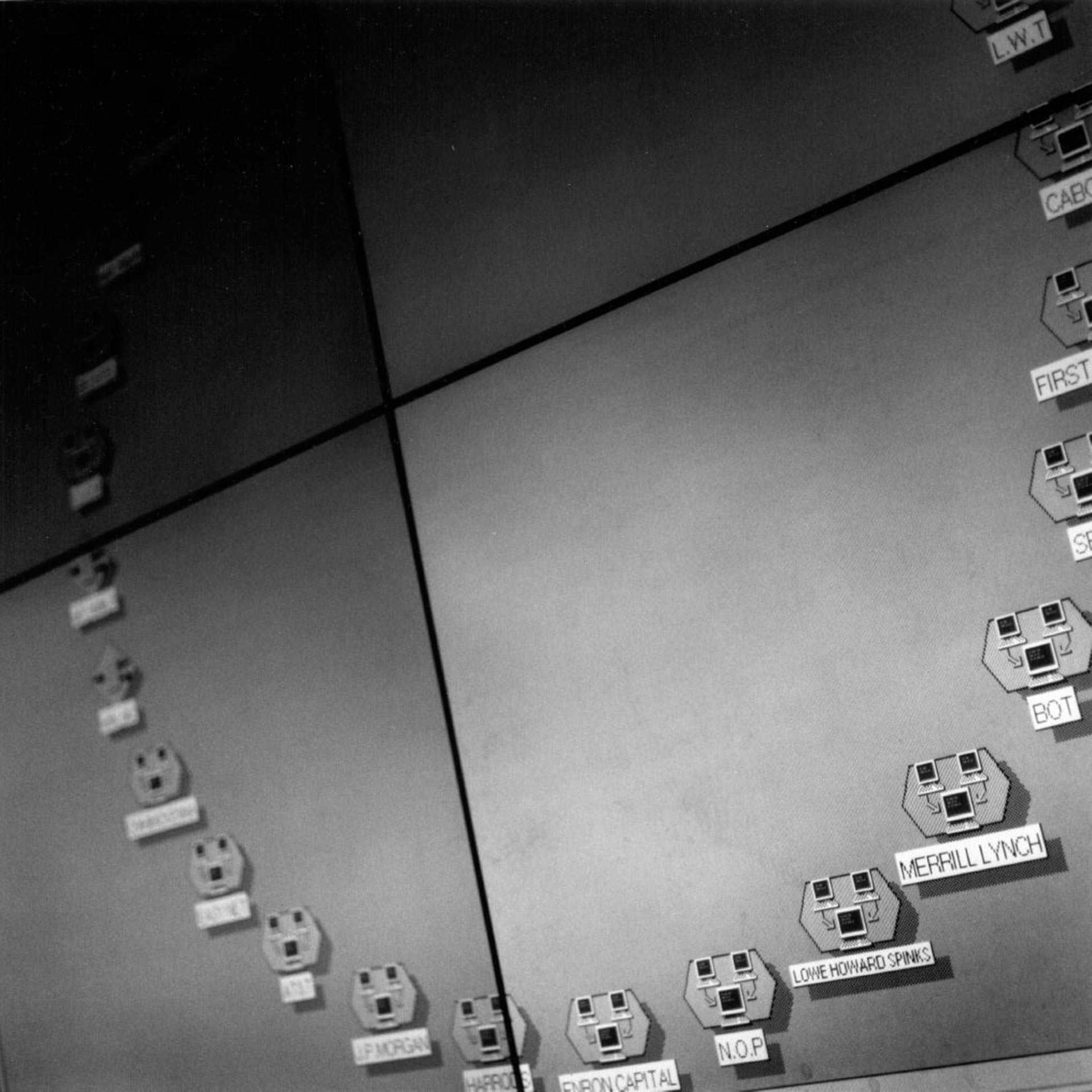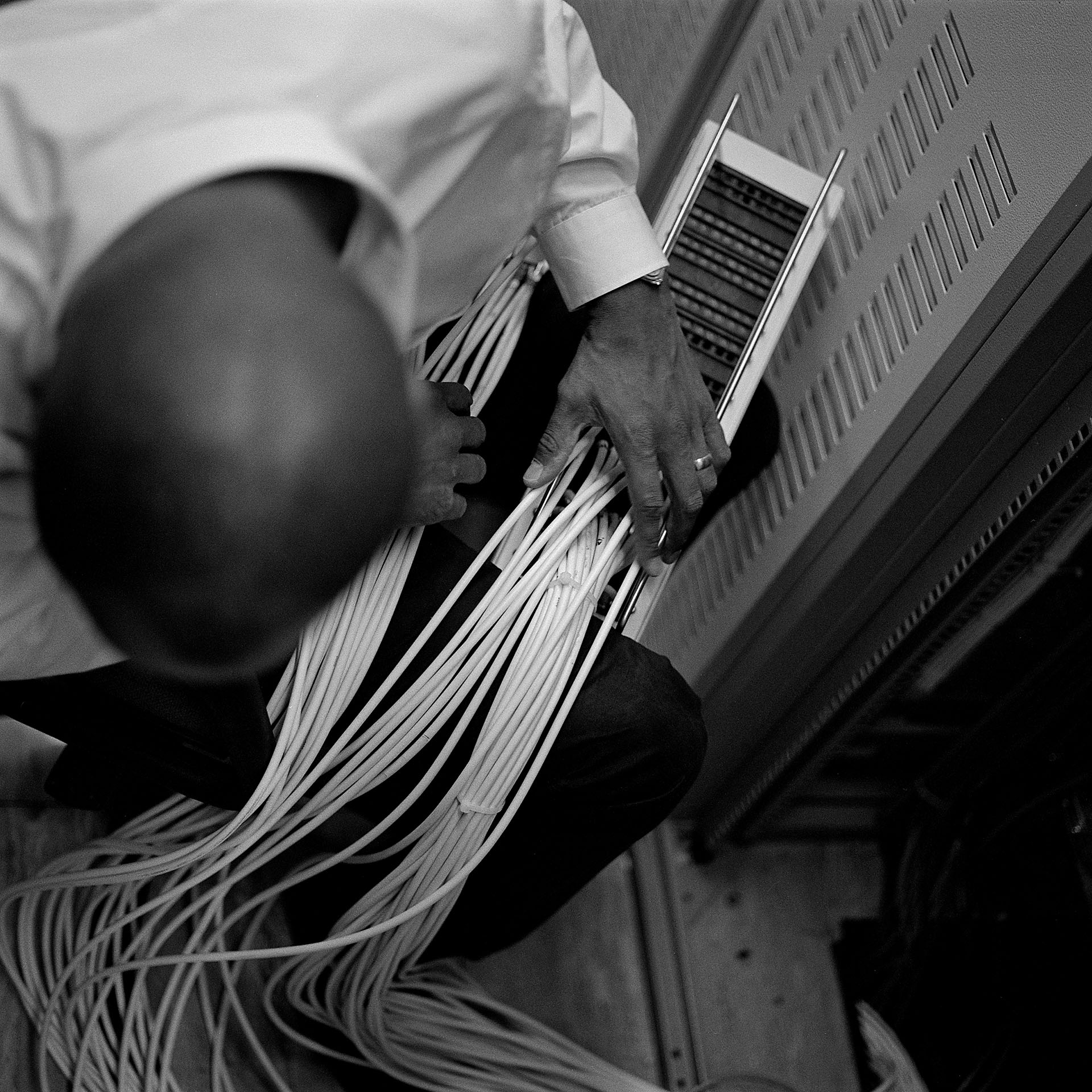1998–2002 and continued
From Burma Road to Wall Street
A photo essay on the meaning of money in an age when the digitization of the world seems to be bringing about the disappearance of its physical manifestation.
Against the backdrop of the economic repercussions of the 1997/1998 Asian and global financial crisis, the photographs were taken in the countries of South and Southeast Asia, the cities Moscow, London, and New York, and elsewhere. They show what people do for payment and the very different religious and moral attitudes provoked by money in different cultures. This exploration of subjects connected to money has continued right up to the present.
The Asian financial and capital crisis began in August 1997 with the devaluation of the Thai currency. By February 1998, Thailand, Indonesia, and South Korea had become victims of the “Asian contagion” that exposed what was behind the myth of the Asian tigers’ economic success: unreliable legal systems, inadequate bank regulation and supervision, lack of corporate transparency, and widespread corruption and cronyism. Indonesia was racked by widespread ethnic violence and the IMF forced Suharto to implement drastic reforms that spelled the beginning of the end of the dictator’s long regime. As the crisis spread globally, engulfing the Eastern European markets and alarming the stockmarkets of the Western hemisphere’s capitals of capital, there was fear that the emerging markets’ collapse could lead to a deep worldwide recession. The notion that global market capitalism was in retreat undermined the vision that this same global market capitalism would secure worldwide prosperity and, ultimately, democracy.
As the dominos kept falling, the scariest repercussion of all after the collapse of the ruble was the fall of Wall Street in the early days of September 1998. The question was how long the Western economies, on whose shoulders the global economy stood, could remain immune to the turmoil. A dispute emerged over the increasing interest being shown by politicians and economists in market intervention and capital controls as the right solution to the crisis. As long as trade and investment were surging, the concept of economic globalization had been en vogue, despite much criticism. During the 1998 crisis it became evident that global capitalism, with its deregulation of trade and free capital flows, had destabilized the economies of poor countries and inflicted large losses on investors in rich countries. Some had suffered more than others. The increase in economic globalization saw a parallel increase in developmental inequality within the global community. In contrast to the Keynesian regime that had preceded it, the two-decades-long rule of neoliberalism with unbridled market forces and uneven development had reached scandalous proportions.
The essay was commissioned by Lettre International and the Haus der Kulturen der Welt, both Berlin, as part of the project Weltreporter unterwegs. Die Kunst des Spurenlesens on the art of literary reportage in a globalizing world (including Peter Matthiessen, James Hamilton-Paterson, and Antonio Tabucchi).
Selected anthologies, catalogues, and print media publications
Wir sind das Geld, Fotogeschichte, 105, Wien 2007
Hugo Loetscher. Durchs Bild zur Welt gekommen. Reportage und Aufsätze zur Fotografie, Zürich 2001
Lettre International, 42, Berlin 1998
Letra Internacional, 61, Madrid 1999
Trama editorial, 4, Madrid 2000
Exhibition
From Burma Road to Wall Street, Haus der Kulturen der Welt, Berlin 1998
Group exhibitions
Press Art: Die Sammlung Annette und Peter Nobel, Museum der Moderne, Salzburg, und Kunstmuseum St. Gallen, 2010
Durchs Bild zur Welt gekommen. Hugo Loetscher und die Fotografie. Kunsthaus Zürich/Fotostiftung Schweiz, Zürich 2001

